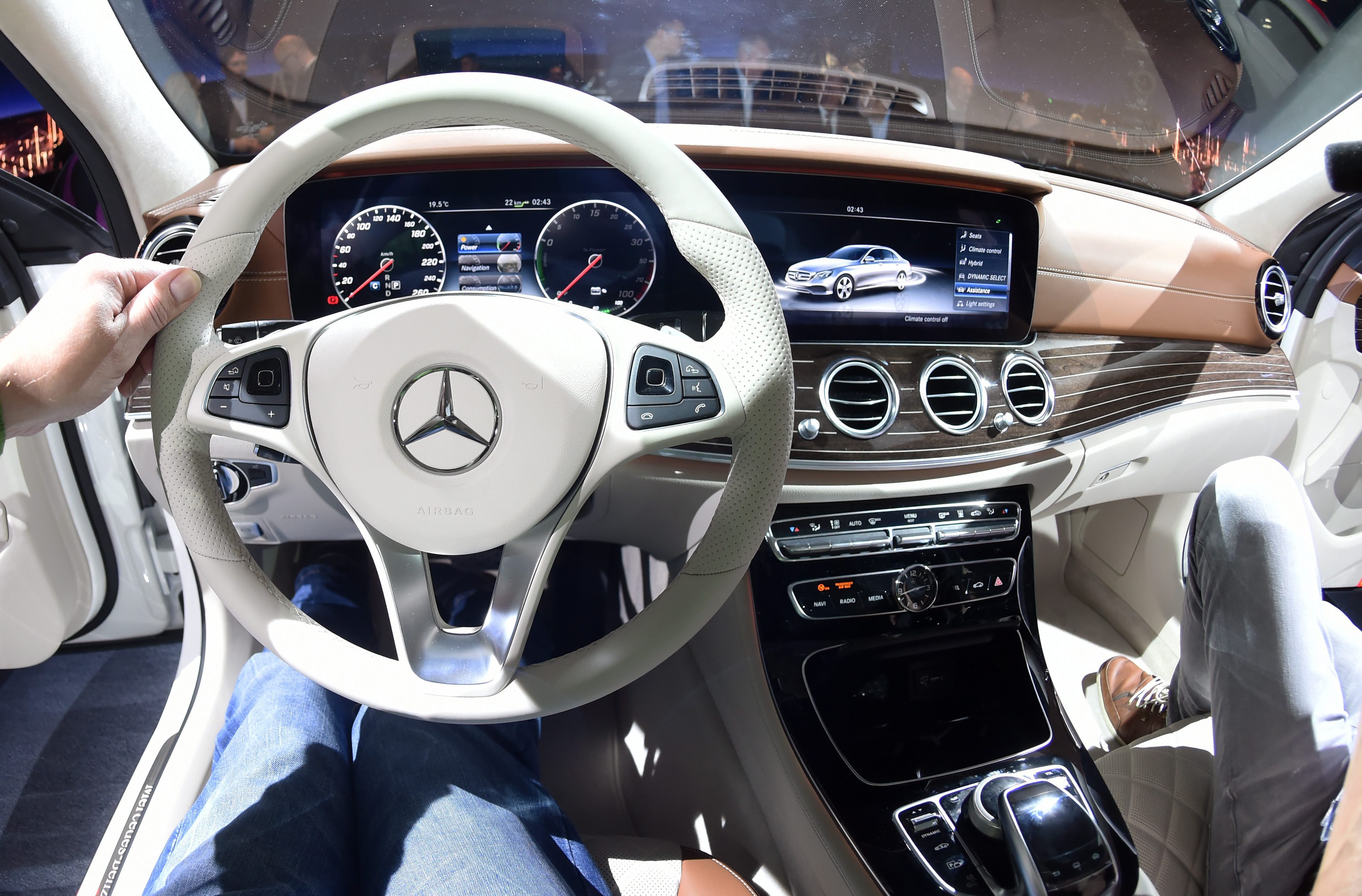Fully self-driving cars are still a few years away, but Mercedes-Benz makes a leap forward with features in the new 2017 E-Class, its midsize luxury sedan and one of its best-selling models.
All the basic stuff you'd expect in a German luxury car is there, such as adaptive cruise control, plenty of airbags, and the system that helps protect passengers if the car determines an accident is imminent, tightening seat belts and aggressively braking the car.
But the new E-Class goes further with technologies like these:
•Drive Pilot. it not only maintains distance from the car in front of you, but also can follow that car through curves.
•Steering Pilot. This feature includes a lane change feature. Once you've set the cruise control, you can use the turn signals to make the car change lanes without your intervention. It will make the change as long as the car doesn't detect a vehicle in the adjacent lane or one approaching at a high rate of speed, which it can determine using its long-range rear-facing radar.
•Side radar. The system detects an impending side impact. If it does, it will rapidly inflate a bladder in the front seat sides that will push you a few inches away from the side of the impact to reduce the shock. It also plays a burst of static noise over the audio system to prime muscles to compensate for for the loud blasts of airbags and the impact itself.
•Evasive Steering Assist. The feature helps you steer around obstacles at low speeds, such as a pedestrian that might have walked out in front of you.
•Emergency Stop Assist. It activates your hazard lights and bring your car to a safe halt if it detects that you haven't touched the steering wheel in a while, assuming you've had a medical emergency.
•Active Brake Assist. This feature brakes the car if it detects an impending collision and you haven't reacted.
•Speed Limit Pilot. Now you can automatically adjust your speed to the local speed limit when it changes along the highway. It can be overridden manually.
It has to be said: It doesn't all work perfectly. During a three-hour highway drive from Carmel, Calif., to San Francisco International Airport, I sampled all of these technologies. The Drive Pilot works well under most conditions, and it even lets you take your hands off the wheel and steers for you for up to 60 seconds, but it sometimes loses its place, such as cresting a rise where the highway also bends.
At lower speeds it failed three times to detect a vehicle that was merging into my lane, causing me to hit the brakes to avoid a low-speed collision. And the automatic speed limit adjustment on the cruise control dropped me from 70 miles per hour to 40 mph when I entered a zone that had trucks exiting the highway for a weight station check — where the truck speed limit was a posted 40 mph.
These steps toward greater autonomy slowly are being introduced system-by-system in order to familiarize people with the coming day in which their car will feature fully self-driving systems. It's good to remember that they are still very much assistance systems, meant to help you drive, not drive for you. The day is coming when cars will drive themselves with no help from us, and steps like these will get us there sooner rather than later.

![EPA USA DETROIT AUTO SHOW EBF TRANSPORT USA MI [image : 86267182]](http://www.gannett-cdn.com/media/2016/06/22/USATODAY/USATODAY/636022182565543848-EClass.jpg)

